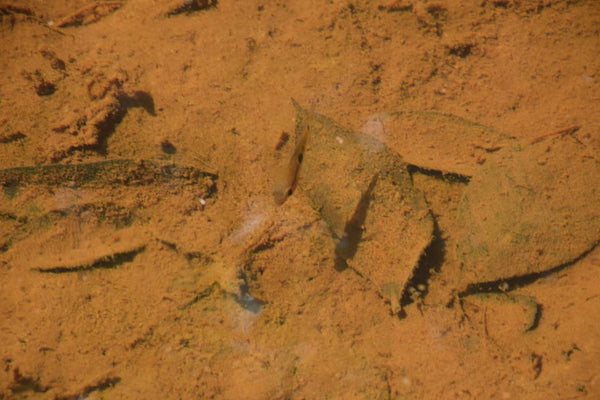- Continue Shopping
- Your Cart is Empty
When the waters return..
If you play with botanicals, it's practically a "given" that you love the idea of tangled masses of roots and driftwood, too. Not simply a few artfully arranged peices, mind you.
No, I'm talking about representations of literal "tangles" of twigs and roots, which tend to accumulate on the forest floor, only to be engulfed by water as the rainy season commences, flooding swollen streams and rivers. It's such an irresistible subject for us, right?
Think about what happens when a tree, or its branches, are submerged in water...

Shortly after submersion, fungi and other microorganisms act to colonize the surfaces, and biofilms populate the bark and exposed surfaces of the branches. Over time, the bark and wood from the branches will impart many chemical substances, (humic acids, tannins, sugars, etc.) into the water, adding to the unique "brew" of life-bearing compounds.

The trees-or their parts- literally bring new life to the waters.
The materials that comprise the tree are known in ecology as "allochthonous material"- something imported into an ecosystem from outside of it. (extra points if you can pronounce the word on the first try...) And of course, in the case of trees, this also includes includes leaves, fruits and seed pods that fall or are washed into the water along with the branches and trunks that topple into the stream.

These materials are known to ecologists as “coarse particulate organic matter”, and in the waters of these inundated forest floors there is a lot of CPOM, and the community of aquatic organisms (typically the aforementioned aquatic insects and crustaceans) has a high proportion of “shredders”, which feed on the CPOM and break it up into tinier bits called (wait for it...) "fine particulate organic matter."
Some of these "shredders" and their larvae are a direct source of food for fishes, providing a nutritious food source for growing populations in these waters.

And of course, some fishes directly consume fallen fruits and seeds themselves as part of their diet as well, aiding in the "refinement" of the CPOM. Think about the Pacu, for example, which has specialized mouthparts suited to crushing hard-shelled fruits and seeds. Other organisms make use of the fine particulate matter by filtering it from the water or accessing it in the sediments that result. These allochthonous materials support a diverse food chain that's almost entirely based on our old friend, detritus!

Yes, detritus. Sworn enemy of the traditional aquarium hobby...misunderstood bearer of life to the aquatic habitat.
And, although the forest floor receives substantially less sunlight than open rivers, the nutrients and available light are utilized by algae, which may colonize the surfaces facing up into the sun. True aquatic plants are essentially non-existent in the flooded forests. Rather, the presence of terrestrial grasses and plants, which can tolerate periods of submersion, are the most common plants here.

And of course, branches, bark, and ultimately, the tree itself, will gradually decompose over long periods of time. Hollowed-out sections will be inhabited by fishes and exploited for the shelter they offer. Other fishes utilize these "microhabitats" as spawning areas, and provide defensible spaces to rear their fry.
And interestingly, when you think about it, fish movement, species "richness," and the size of the fish population are affected by the physical and biological influences of fallen trees! How interesting that the lives of aquatic animals are so inexorably linked to the terrestrial environment!

And the deep beds of leaves and plant parts that may be "corralled" by fallen trees- a sort of natural "dam"- will affect the types of fishes which reside there. Some fish species, which cannot tolerate the lower oxygen concentrations found in these areas of deep leaf litter, will reside elsewhere, allowing a sort of natural "resource partitioning" that lets more tolerant species (such as knifefishes, catfishes, etc.) take advantage of the food sources in these deep beds.
Other fishes take advantage of the physical barrier that a fallen tree presents to shelter from predatory species. Numerous behavioral and even physiological adaptations have taken place over eons to allow fishes to exploit these changes in their environment caused by fallen trees!
It's pretty hardcore stuff.
And it's all part of the reason that I spend so damn much time pleading with you- my fellow fish geeks- to study, admire, and ultimately replicate natural aquatic habitats as much as you do the big aquascaping contest winners' works. In fact, if every hobbyist spent just a little time studying some of these unique natural habitats, I think the hobby would be radically different.
I think that there would also be hobby success on a different level with a variety of fishes that are perhaps considered elusive and challenging to keep. Success based on providing them with the conditions which they evolved to live in over the millennia, not a "forced fit" its what works for us.
More awareness of both the aesthetics and the function of fascinating ecological niches, such as the aforementioned flooded forests, would drive the acceptance and appreciation of Nature as it is- not as we like to "edit" and "sanitize" it.

The result would be greater appreciation for these precious, diverse, and often threatened ecological treasures, and an accompanying "mental shift" which recognizes the true beauty that exists when the waters return to the forest floors.
Until next time...
Stay observant. Stay studious. Stay creative. Stay engaged. Stay...awed...
And Stay Wet.
Scott Fellman
Tannin Aquatics







Scott Fellman
Author